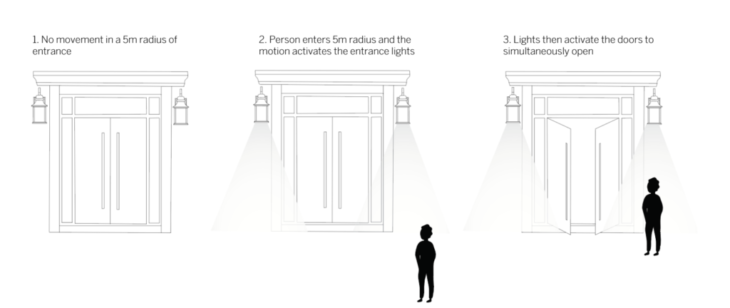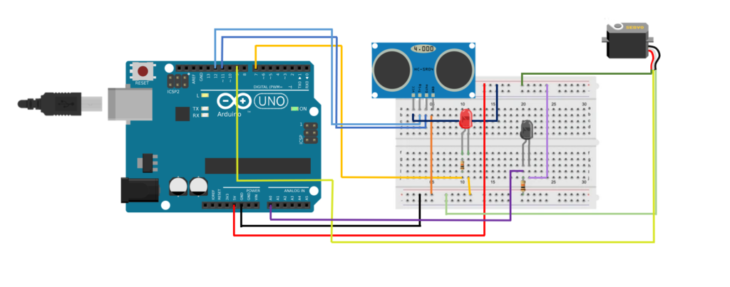HOW TO MAKE AN ENTRANCE
Hands down the best entrance system…
CONCEPT
The Covid-19 virus has made one aware of the need for zero-contact systems in public areas. Therefore, an investigation was done into an autonomous responsive entrance system. This is to be implemented as a method of touch reduction in public spaces, as a direct response to the covid-19 pandemic.
CONCEPT IN REAL-LIFE SITUATION

TECHNIQUE
The autonomous responsive entrance system would work by using an ultrasonic sensor to pick up movement at the entrance of a public indoor space. When this movement is identified (people walking towards the entrance), the entrance lights would go on. The lights being switched on would be strong enough to stimulate the light sensor. This sensor would activate the servo motor which in return would control and open the automatic door allowing a person to enter the space with zero contact.
Therefore, the Arduino circuit was build using two sensors (ultrasonic sensor and a phototransistor) and two actuators (LED and Servo motor). The input of motion would therefore result in two outputs, the LED light switching on and the servo motor being activated which in real-life situation would open the entrance doors.
FLOW DIAGRAM

SCHEME DIAGRAM
The scheme diagram below shows the Arduino circuit setup which was used (alongside the developed code) in order to produce the desired output.

(How to Make an Entrance) is a project of IAAC, Institute for Advanced Architecture of Catalonia developed at (Masters in Advanced Architecture) in (2021/2022) by:
Student: (Emily Rackstraw)
Faculty: (Introduction to Programming and Physical Computing)